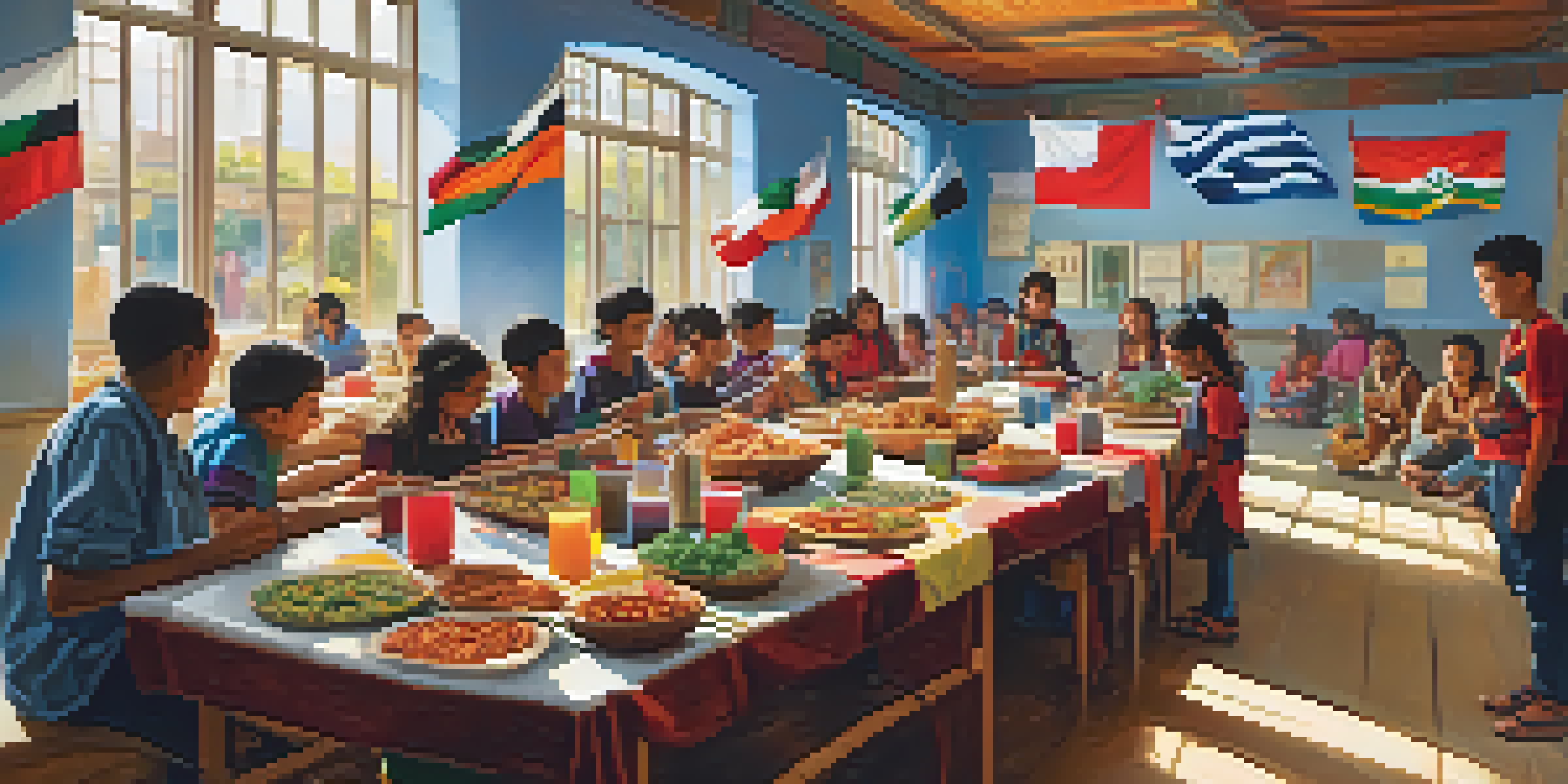The Role of Education in Promoting Cultural Diversity in LA

Understanding Cultural Diversity in Los Angeles Schools
Los Angeles is a vibrant tapestry of cultures, and its schools reflect this rich diversity. With students from various ethnic backgrounds, schools become microcosms of the broader community. This diversity is not just a statistic; it shapes the experiences and perspectives of students, fostering empathy and understanding.
Diversity is not a reason for division; it is a reason for unity.
Cultural diversity in education allows students to learn from one another and appreciate different worldviews. It creates an environment where students can share their traditions, languages, and customs, enriching the educational experience for everyone. This exposure is crucial in preparing students for a globalized world.
Related Resource
Moreover, schools that celebrate cultural diversity often see improved student engagement and performance. When students feel their backgrounds are valued, they are more likely to participate actively in their education. This sense of belonging can lead to better academic outcomes and a more harmonious school environment.
Curriculum Changes to Embrace Diversity
To promote cultural diversity, educational institutions are increasingly revising their curricula. By integrating multicultural education, schools can offer a more inclusive perspective that resonates with all students. This approach not only highlights the contributions of various cultures but also challenges stereotypes and biases.

For example, literature classes might include works from diverse authors, allowing students to see their experiences reflected in the texts they study. History lessons can incorporate multiple viewpoints, providing a more comprehensive understanding of events. Such changes help students form connections with their education, making it more relevant and engaging.
Diversity Enriches Student Experience
Cultural diversity in schools fosters empathy, understanding, and a sense of belonging among students.
Additionally, incorporating diverse voices in the curriculum fosters critical thinking and discussions around cultural issues. Students learn to analyze different perspectives and understand the importance of inclusivity, which is essential in today's interconnected world.
Extracurricular Activities Celebrating Diversity
Extracurricular activities play a significant role in promoting cultural diversity in schools. Clubs and organizations that focus on different cultures provide students with opportunities to explore their heritage and share it with their peers. These activities foster a sense of pride and community among students.
Our ability to reach unity in diversity will be the beauty and the test of our civilization.
Events like cultural fairs, international days, and heritage celebrations allow students to showcase their backgrounds through food, dance, and art. These experiences not only educate the entire student body but also create lasting memories and friendships. Through these interactions, students develop a deeper understanding of each other's cultures.
Related Resource
Moreover, these extracurricular programs often encourage collaboration among students from different backgrounds. Working together on projects or performances helps break down barriers and build meaningful relationships. This camaraderie can lead to a more inclusive school environment, where diversity is celebrated.
The Role of Teachers in Promoting Diversity
Teachers play a crucial role in fostering an inclusive atmosphere that promotes cultural diversity. By being open-minded and culturally responsive, educators can create classrooms where all students feel valued. This requires ongoing professional development to understand the diverse needs of their students.
Moreover, when teachers incorporate their own cultural experiences into lessons, it humanizes the learning process. Students relate better to educators who share their backgrounds or demonstrate an understanding of different cultures. This connection can inspire students to share their own stories and experiences, enriching classroom discussions.
Curriculum Must Reflect All Voices
Integrating multicultural education into the curriculum helps challenge stereotypes and engage students more effectively.
Additionally, teachers who encourage critical thinking about social issues can empower students to challenge discrimination and promote equity. By fostering a supportive classroom environment, they help students develop the skills needed to navigate and appreciate a diverse society.
Parental Involvement in Cultural Education
Parental involvement is essential in promoting cultural diversity within schools. When parents engage in their children's education, they can share their cultural backgrounds, enriching the school community. Schools can benefit from hosting workshops or events that encourage parents to participate and share their experiences.
Moreover, when parents from diverse backgrounds collaborate with teachers and administrators, it creates a more inclusive school environment. This partnership can help address the unique needs of students from different cultures and ensure that their voices are heard. Schools that prioritize parental involvement often see increased student success and satisfaction.
Related Resource
Additionally, family engagement in cultural education fosters a sense of community among parents and students alike. It encourages open dialogue about cultural differences and commonalities, building bridges between diverse groups within the school.
Community Partnerships Supporting Cultural Diversity
Community partnerships are vital in promoting cultural diversity in education. Local organizations, cultural centers, and businesses can collaborate with schools to provide resources and support for cultural initiatives. These partnerships can enhance students' learning experiences and provide real-world connections to their education.
For example, community events that focus on cultural heritage can serve as platforms for students to participate and showcase their talents. Such collaborations not only benefit students but also strengthen ties between schools and the communities they serve. This sense of belonging can have a lasting impact on students' lives.
Community Engagement is Essential
Partnerships with local organizations enhance cultural initiatives and provide students with real-world connections.
Furthermore, these partnerships can lead to mentorship opportunities, internships, and volunteer experiences that expose students to various cultural contexts. By engaging with the broader community, students gain valuable insights and skills that prepare them for future success.
Challenges in Promoting Cultural Diversity in Education
Despite the efforts to promote cultural diversity in education, challenges still exist. Systemic issues like funding disparities can limit resources for schools, particularly those in underserved areas. This inequity often affects the implementation of diverse curricula and extracurricular programs.
Additionally, biases and stereotypes may persist among students and staff, creating barriers to inclusivity. Addressing these challenges requires ongoing training and awareness initiatives aimed at fostering a more accepting school culture. Schools must actively work to dismantle these barriers to create an environment where all students thrive.

Moreover, resistance to change can hinder progress in promoting cultural diversity. Some educators or community members may feel threatened by the introduction of new perspectives. Open dialogue and collaboration are essential in overcoming these challenges and moving toward a more inclusive educational landscape.